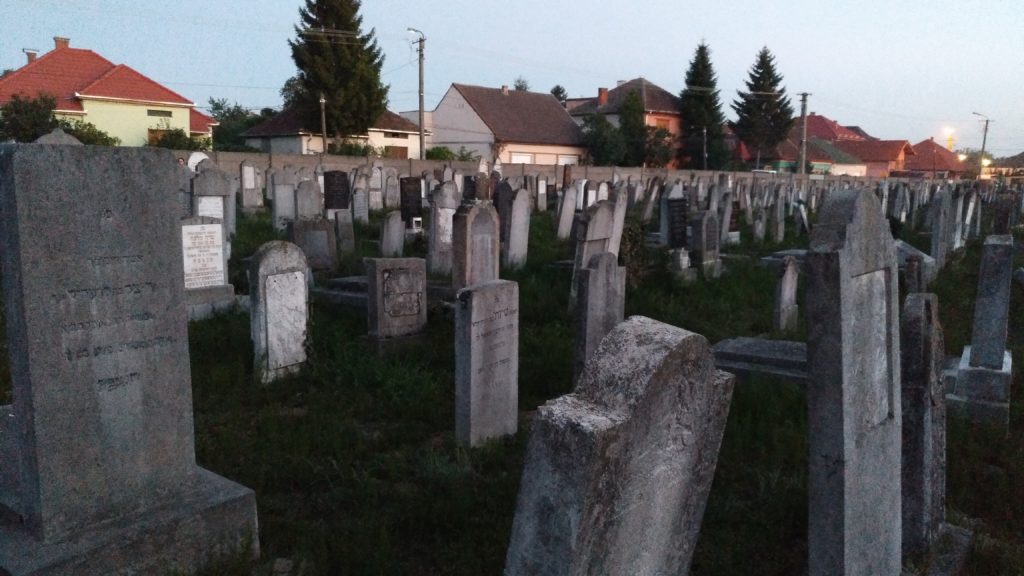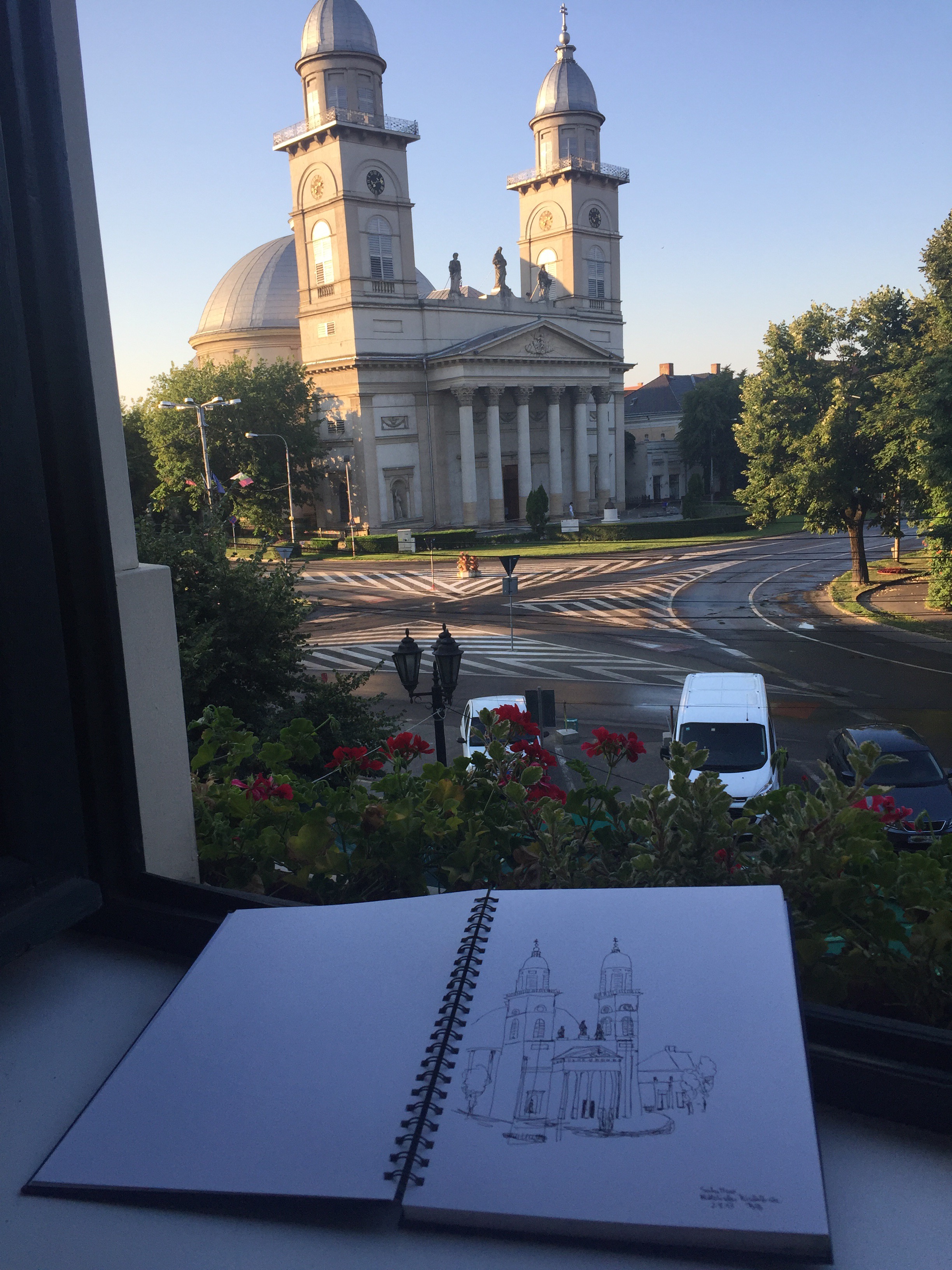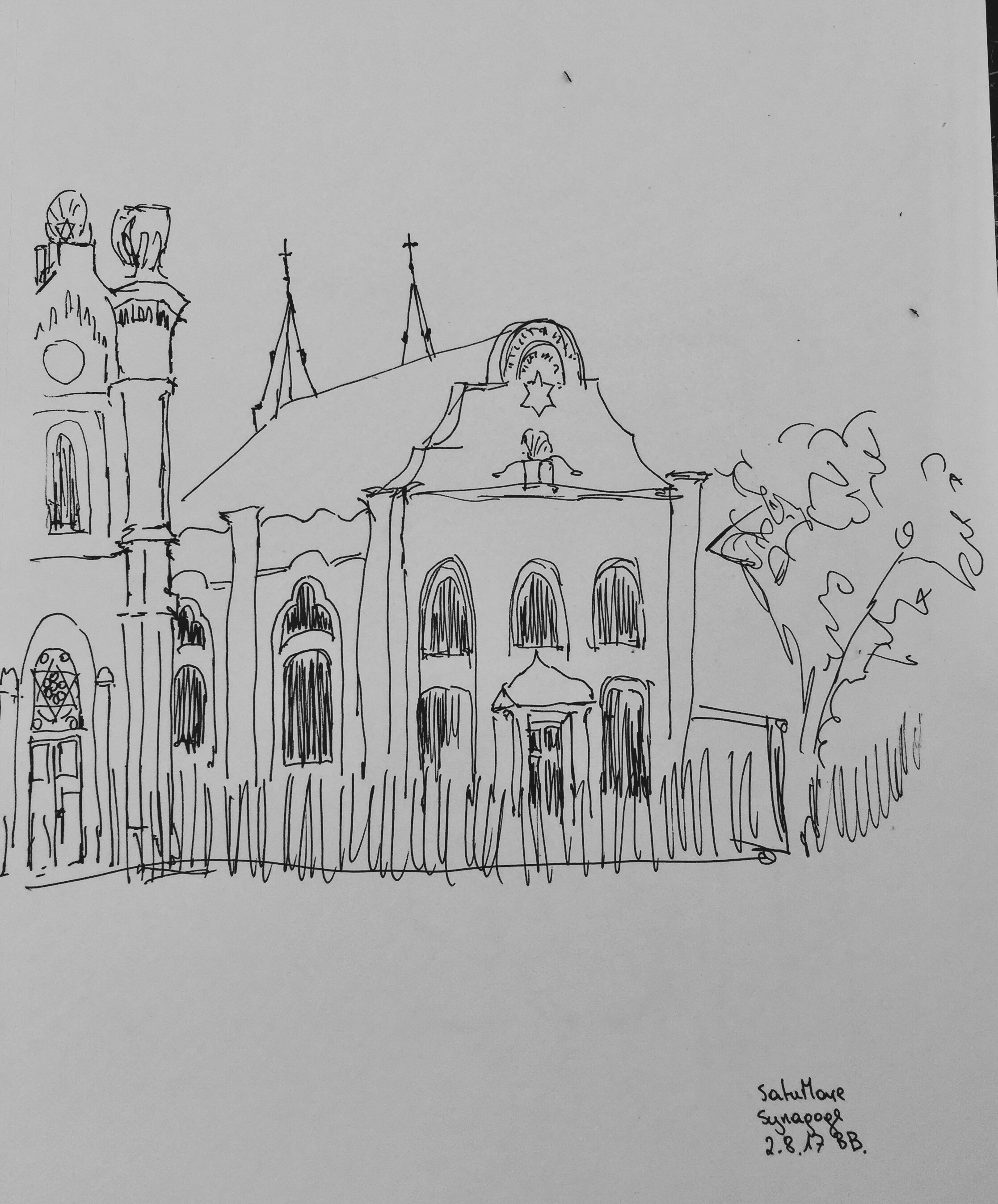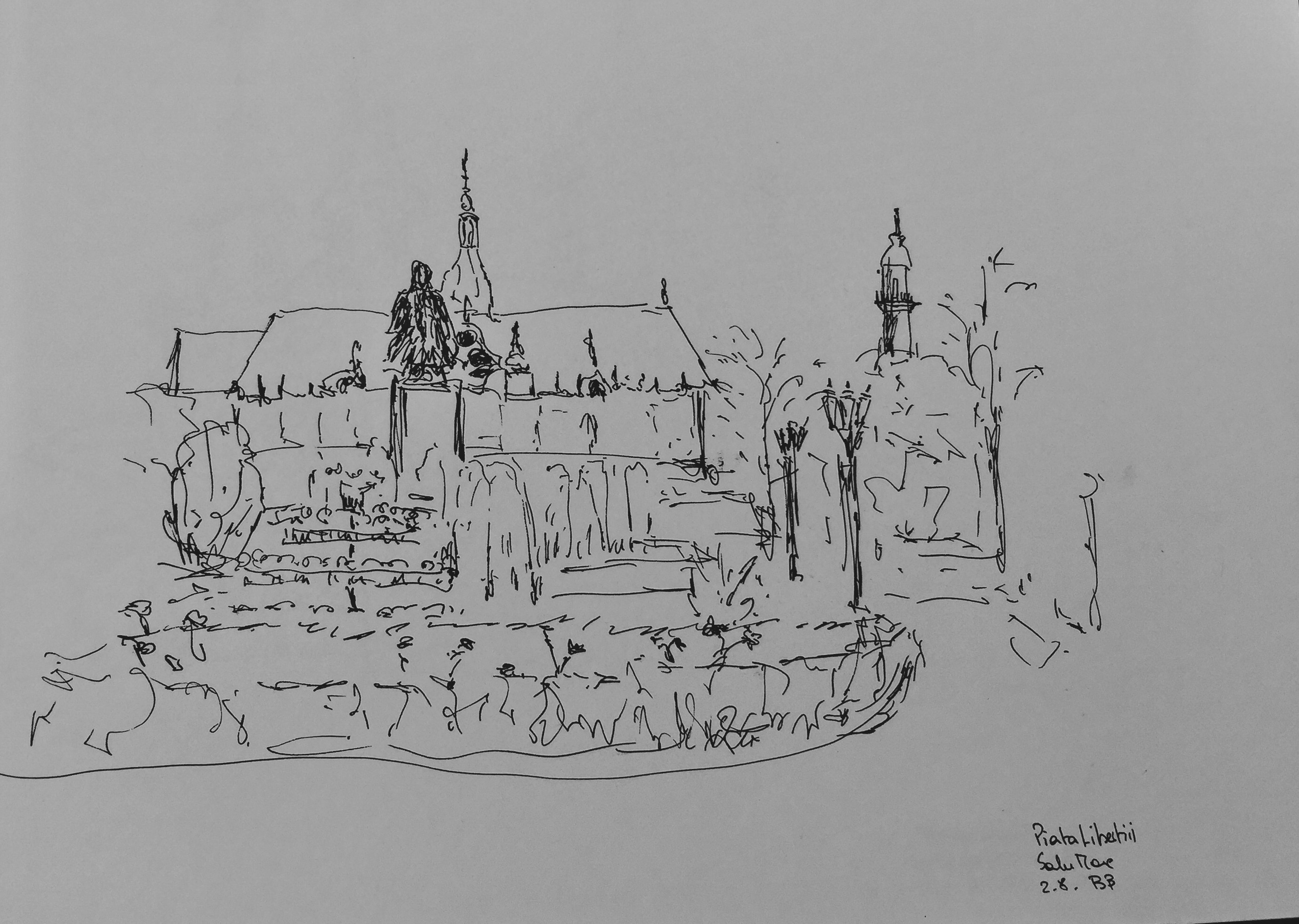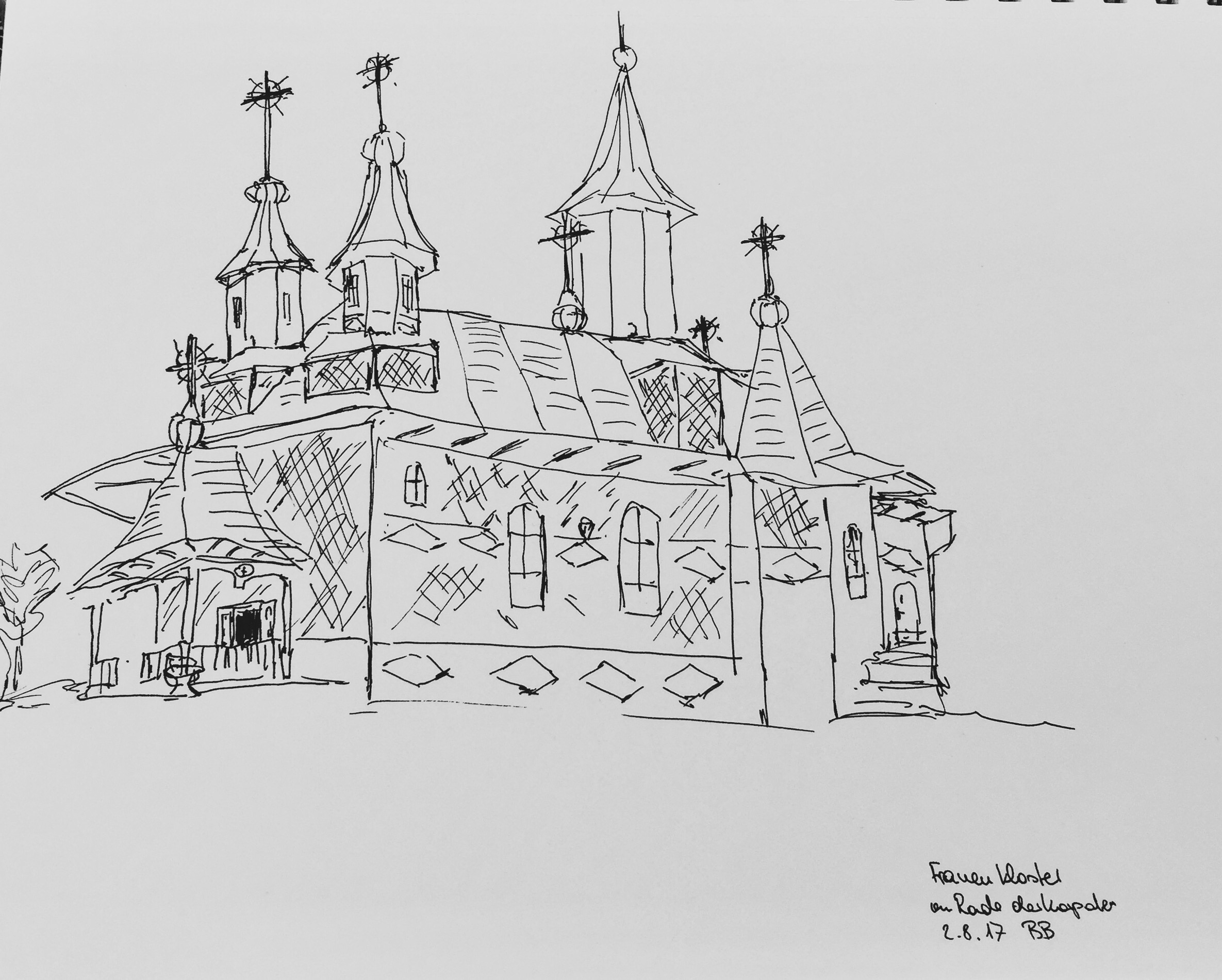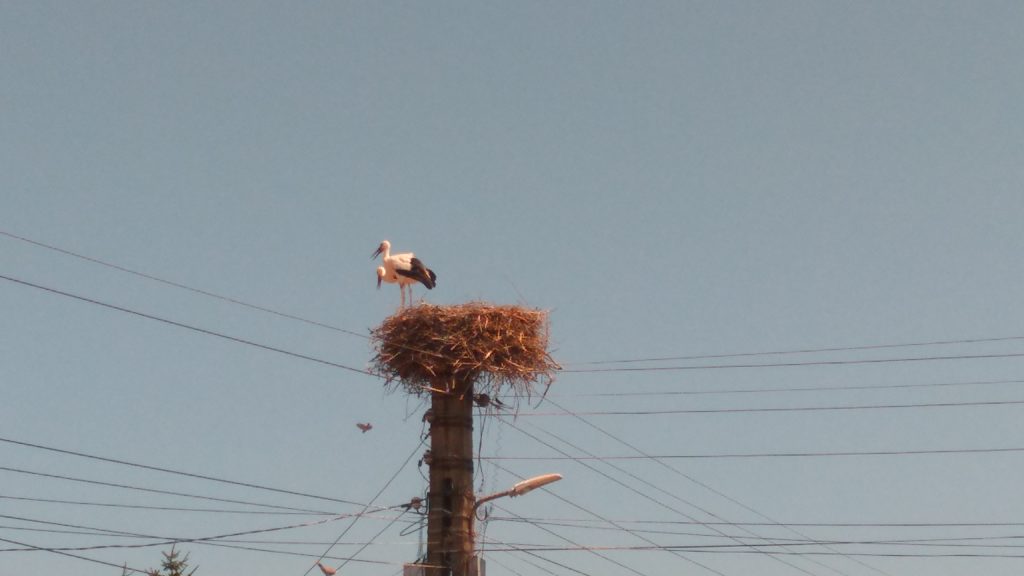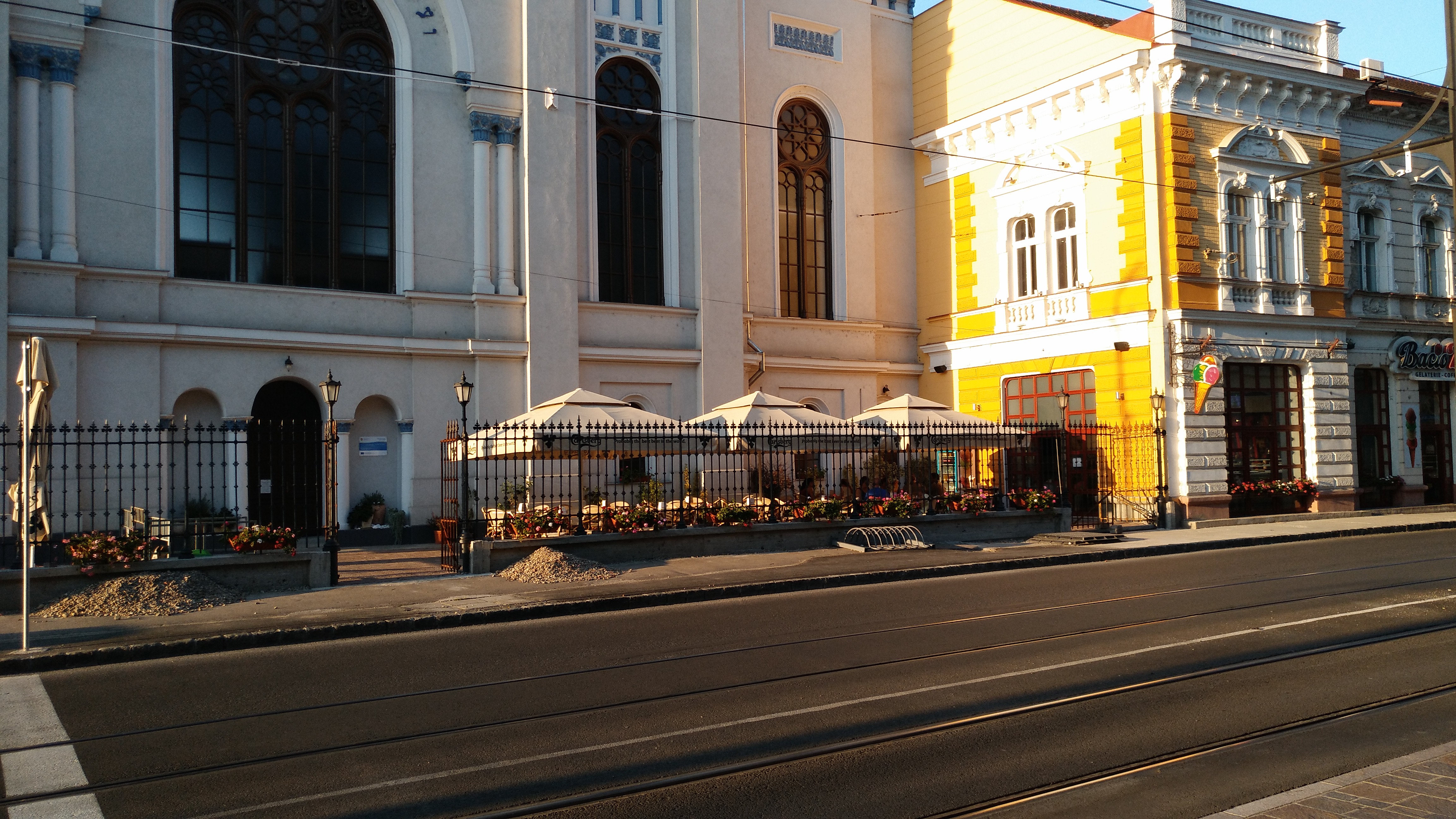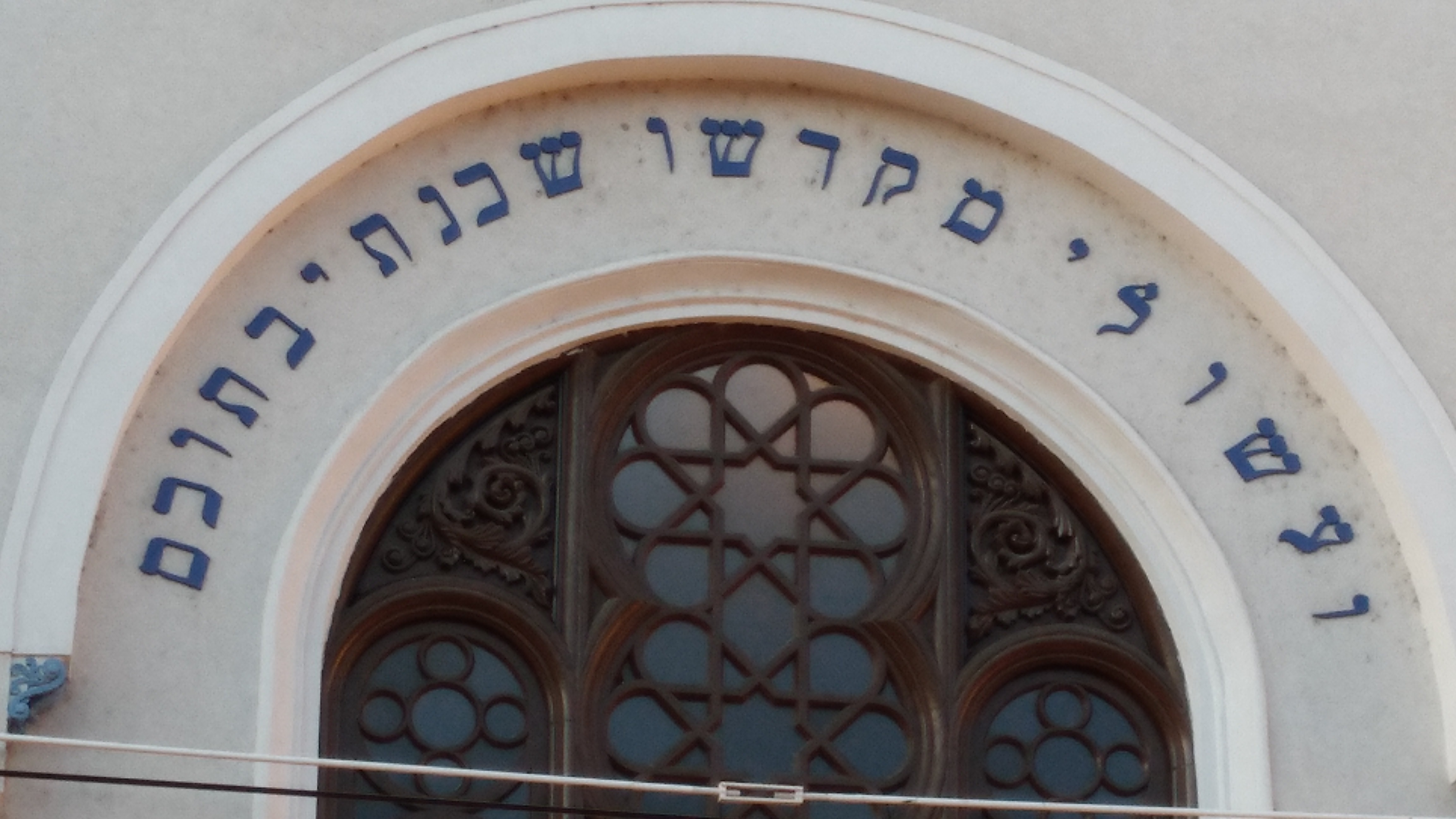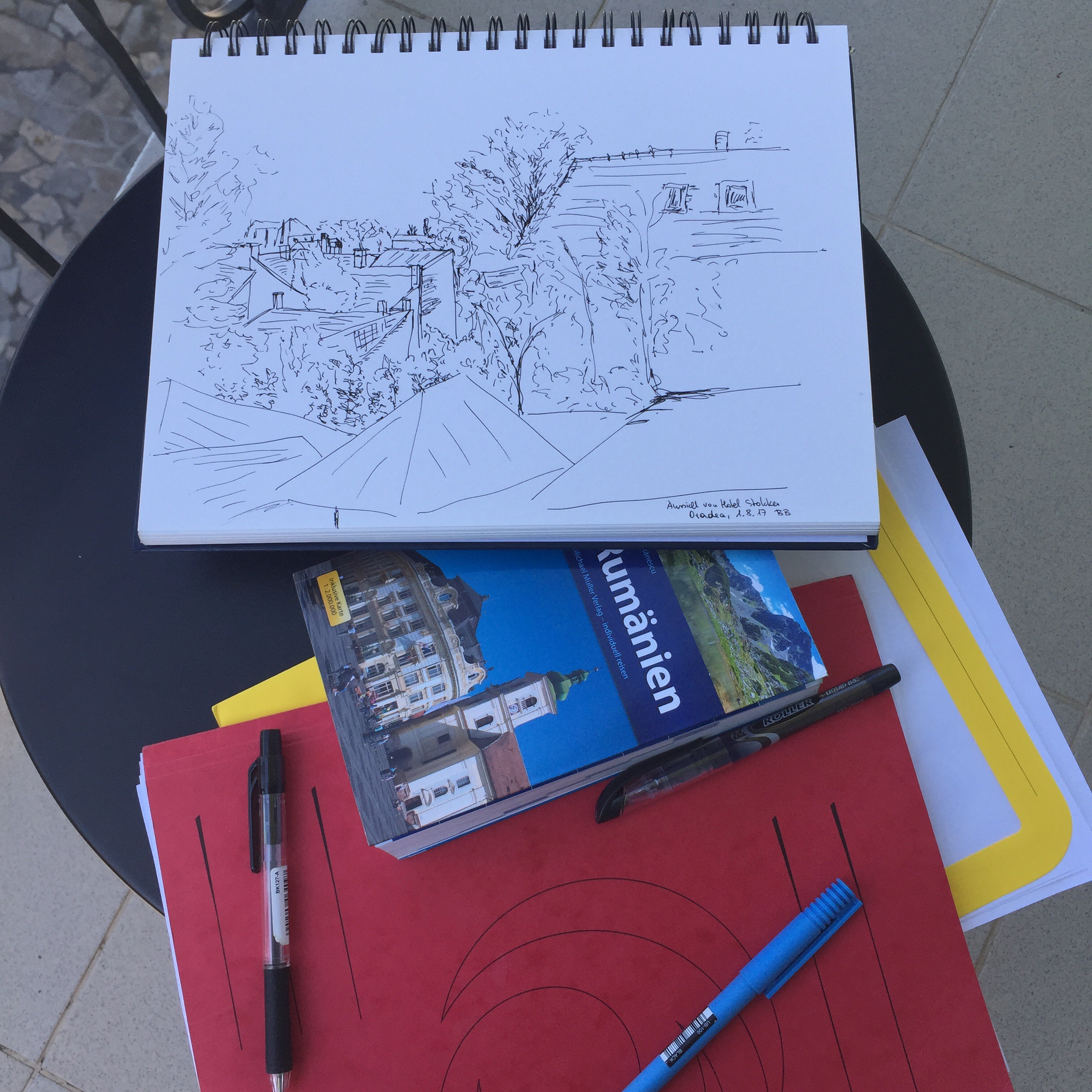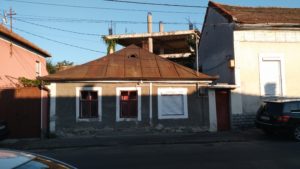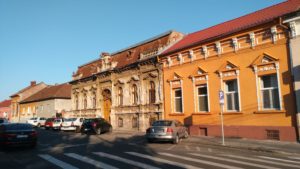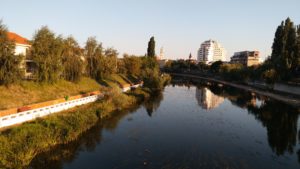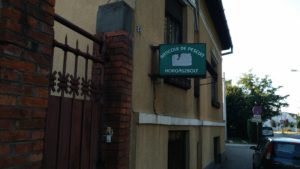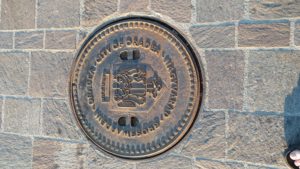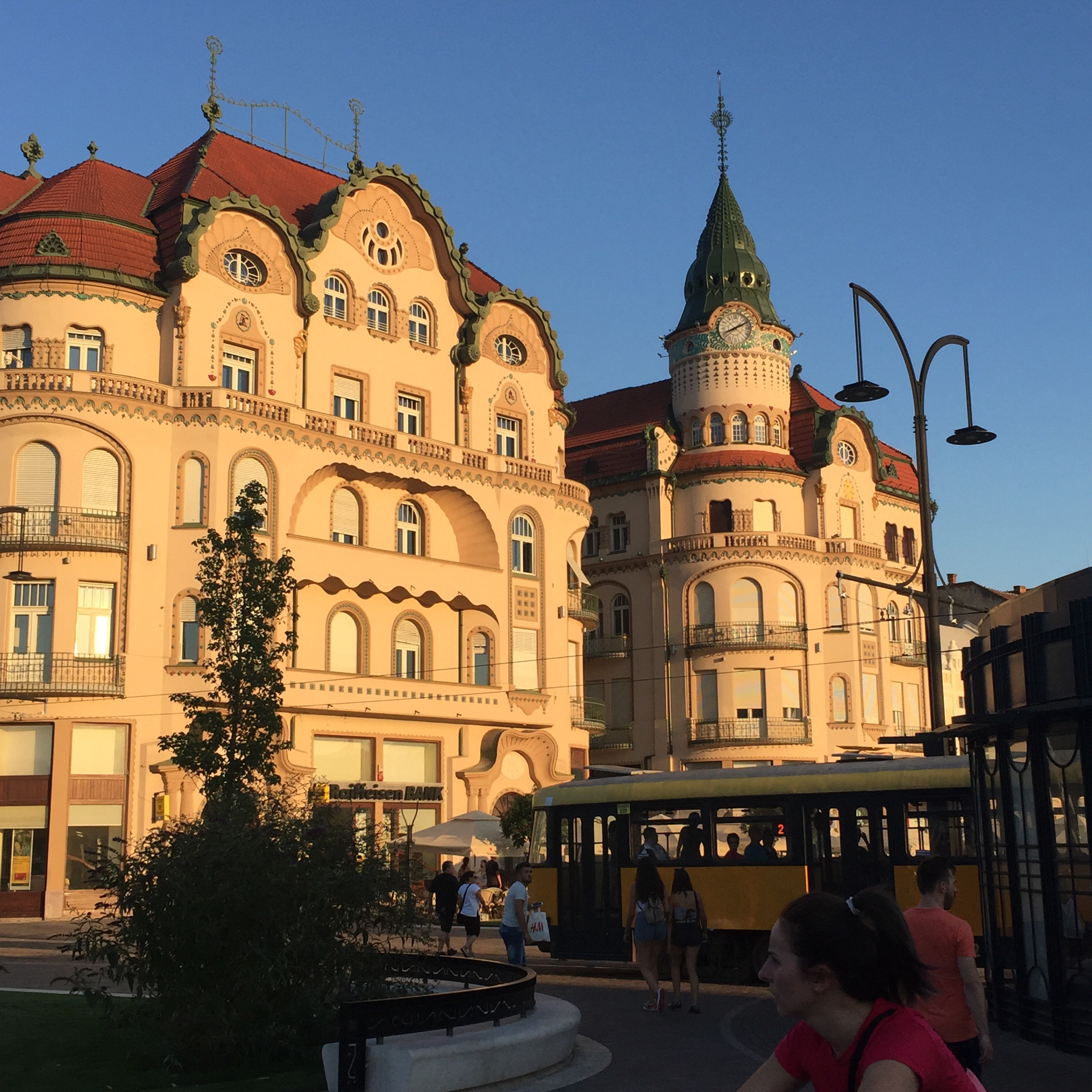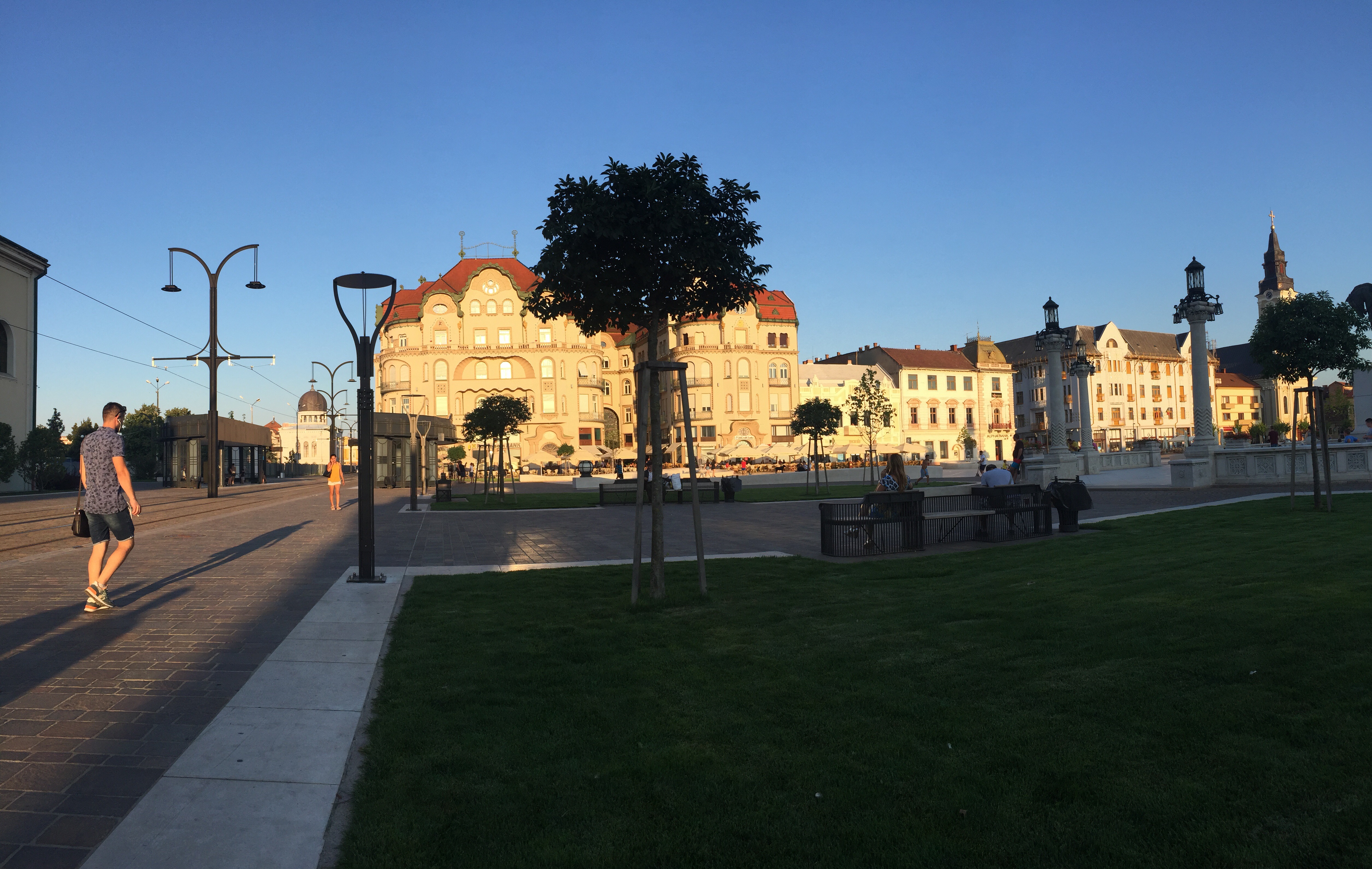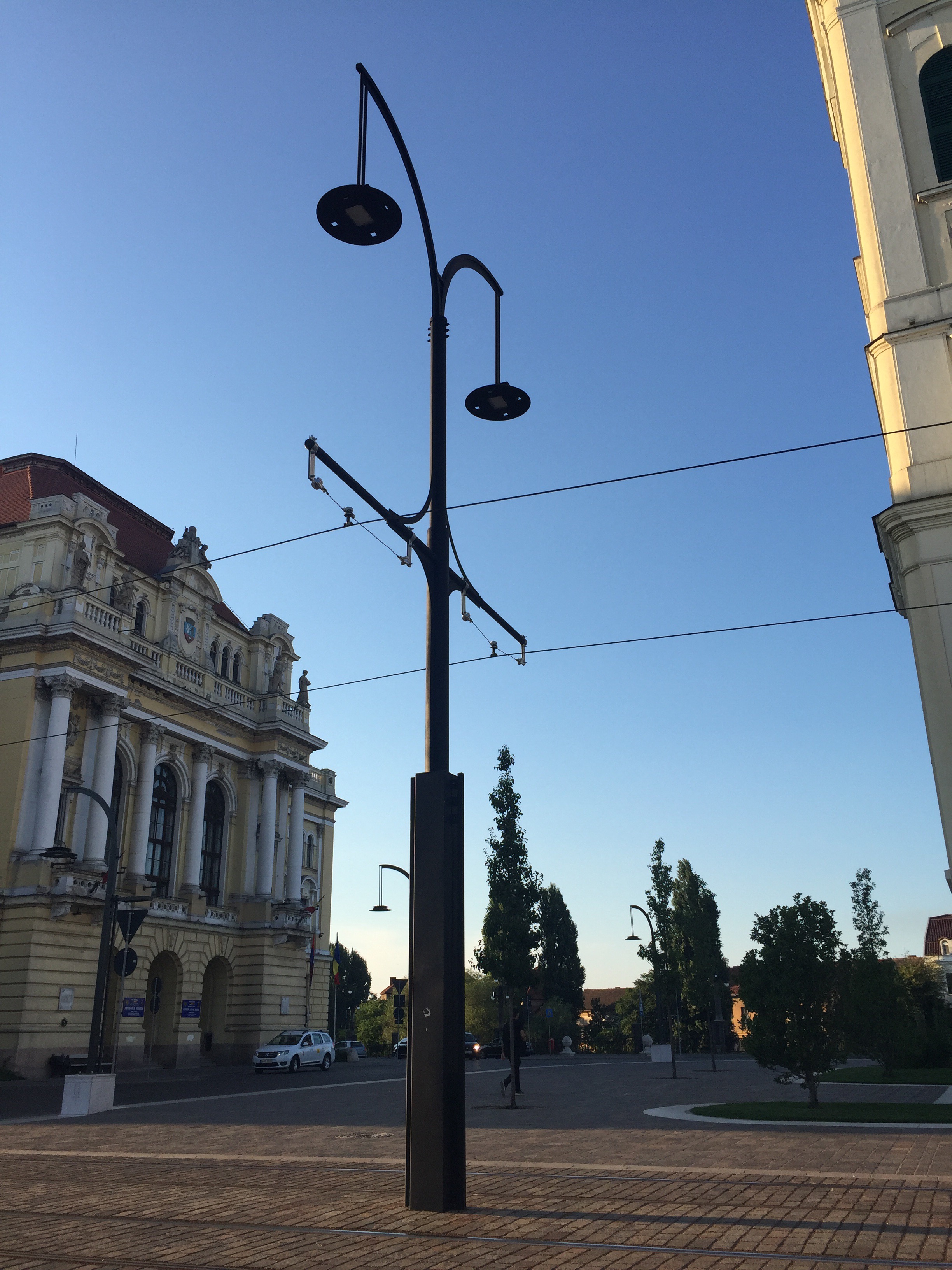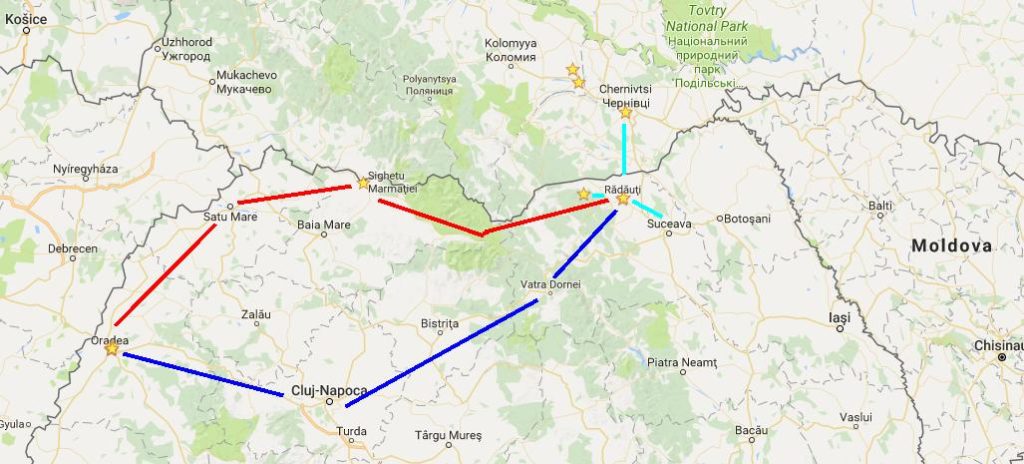As most towns and villages we have seen on our trip, Satu Mare has quite a number of Christian cemeteries for the various denominations that can be found in these parts: Catholic, Romanian Orthodox, Greek Orthodox (aka Unified) and various Protestant churches. Each need their own cemetery as a matter of course. This way, each can argue that the respective “infidels” are buried outside the confines of the respective grave yard.
For the Jews of Satu Mare, there exist two cemeteries, situated on either side of Strada 9 Mai 1877 (incidentally, on May 9th, 1877, Romania gained independence from the Osman Empire); a small street lined by the walls of the Neolog (on the southern side of the street, GPS co-ordinates 47.790786,22.891955) and the Orthodox (on the northern side, GPS 47.791839,22.893718) cemeteries.
Strangely, Google did not permit me to add the two locations.
An elderly lady approached us and asked us in Hungarian, if we had come to see the grave yards. She knocked on the gates of a small house and raised a friendly man who had not only keys to the cemeteries but also indexes of the persons buried there. His card says Hebrew Cemetery Administrator for Satu Mare county and he takes care of the place and he will happily refurbish a headstone or re-color the letters, if asked to, for a small fee. His name is Ioan Bojani and he may be reached at +40-754-610-448 or at yahoo.com (his address begins with bojani.ioan …)

